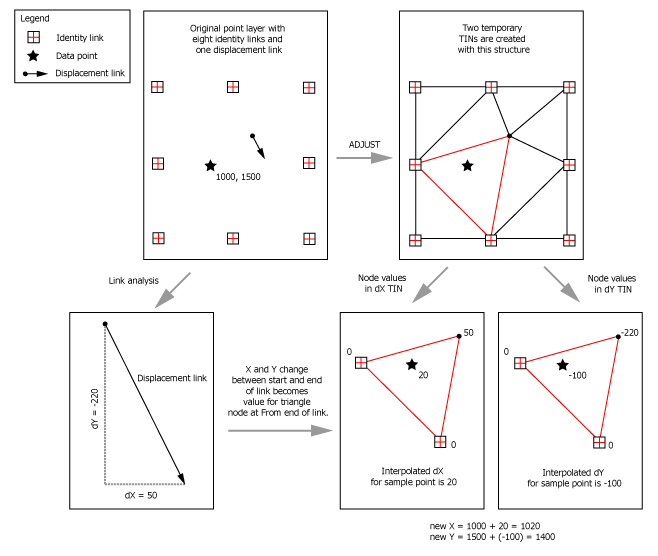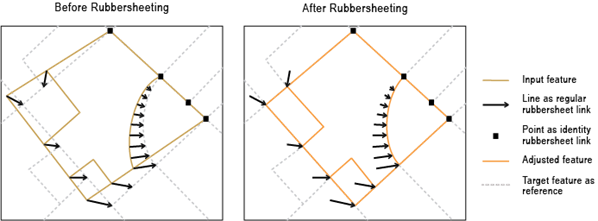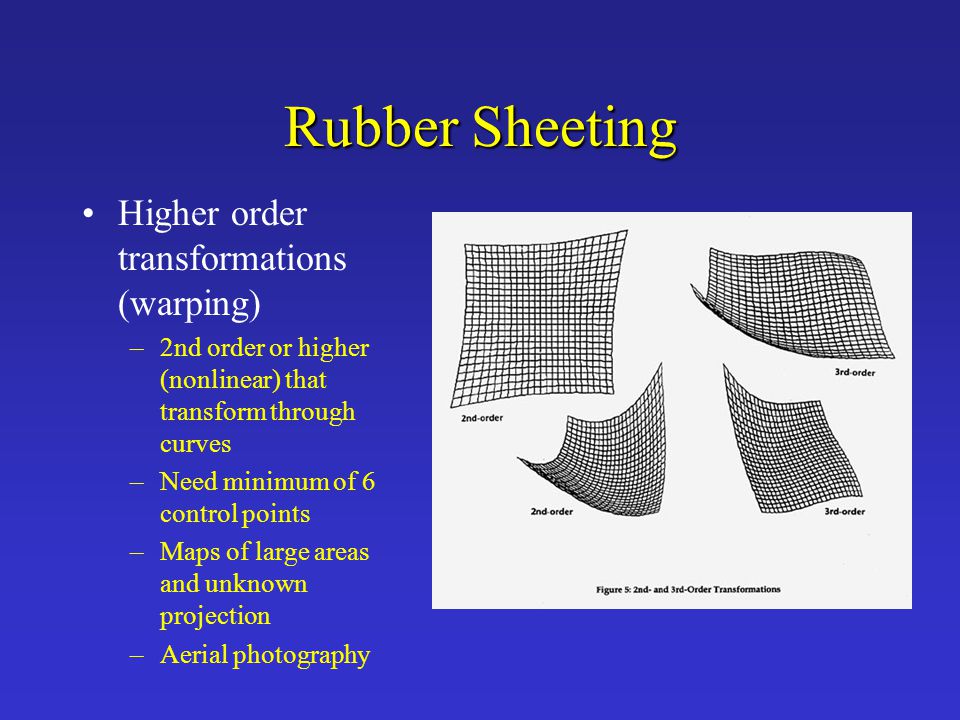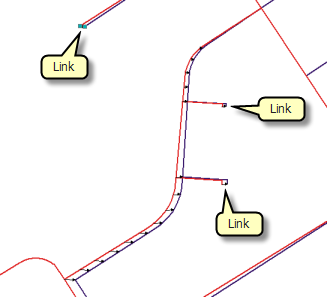Rubbersheeting makes spatial adjustments to align the input feature locations with more accurate target feature locations based on the specified rubbersheet links.
Rubber sheet transformation in gis.
Used to control rubber sheeting and adjustment operations.
The modify features pane appears.
Click the adjustment methods drop down arrow and click rubbersheet.
Qgis georeferencer plug in provides a number of transformation types including thin plate spline which enables full rubber sheeting.
This drawback brings us to the idea of incorporating the historical maps into gis after rubber sheet transformation i e.
An affine transformation can differentially scale the data skew it rotate it and translate it.
They may be introduced by imperfect registration in map compilation lack of geodetic control in source data or a variety of other causes.
The graphic below illustrates the four possible changes.
Rubber sheeting is a useful technique in historical gis where it is used to digitize and add old maps as feature layers in a modern gis.
X ax by c y dx ey f.
Qgis is a free open source gis package.
By default arcmap supports three types of transformations.
On the edit tab in the features group click modify.
Click the spatial adjustment menu and click options.
Click rubbersheet for the adjustment method so you can set additional options for rubbersheeting.
The input link features represent the regular links.
Rubbersheeting is used to make small geometric adjustments in your data usually to align features with more accurate information.
Click either the natural neighbor or linear method and click ok.
Rubber sheeting topological process of stretching or shrinking a subarea or portion of a map or image to fit in registration with selected control points.
Expand alignment and click transform.
Geometric distortions commonly occur in source maps.
Before aerial photography arrived most maps were highly inaccurate by modern standards.
You can press and hold the spacebar to temporarily turn off snapping as you create anchor points and draw displacement links or rubber sheet area polygons.
Cadcorp spatial information system software sis map modeller is offering a tool for rubbersheeting data layers.
Click the options button.
The input point features represent identity links that hold source positions unmoved during the rubbersheeting process.
Rubber sheeting may improve the value of such sources and make them easier to compare to modern maps.
Geometric correction of them.
Click the spatial adjustment menu and click options.
It makes possible comparing and overlaying multiple maps from different time periods.
Click the general tab.
Root mean square error measure of registration accuracy used during digitizing and coverage transformations.
Click the spatial adjustment menu point to adjustment methods then click a transformation method.










